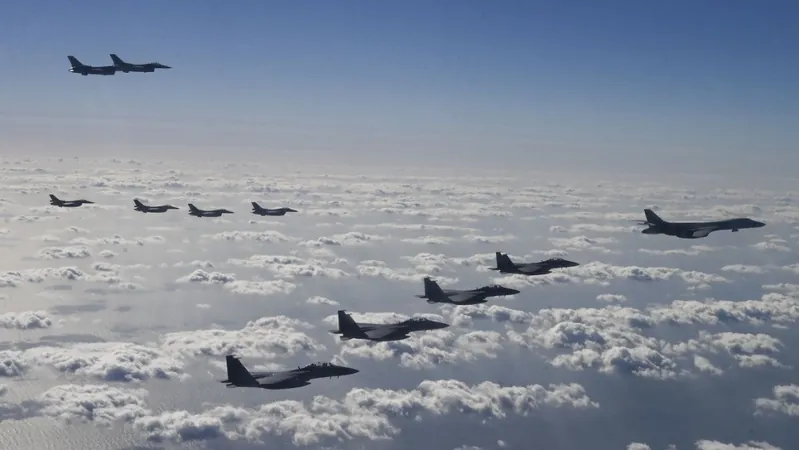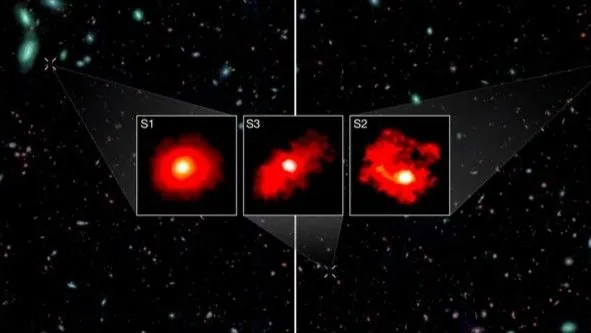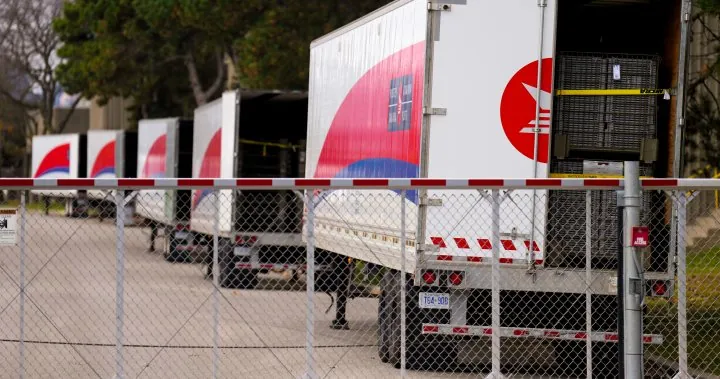
U.S. Conducts Joint Military Exercise with South Korea and Japan Following North Korea's Provocative Missile Test
2024-11-03
Author: Sophie
SEOUL, South Korea - Countering North Korea's Military Threats
In a bold move aimed at countering North Korea's escalating military threats, the United States has deployed a long-range B-1B bomber for a trilateral drill involving South Korea and Japan. This military exercise took place on Sunday, just days after North Korea carried out a test of its newly developed intercontinental ballistic missile (ICBM), the Hwasong-19, which is designed to potentially reach the U.S. mainland.
North Korea's Recent Missile Test
North Korea’s missile test on Thursday marked a significant milestone, as the Hwasong-19 flew higher and remained airborne longer than any previous missile launched by the regime. Kim Jong Un described the test as "an appropriate military action" in response to perceived security threats from the United States and its allies.
Trilateral Military Training
In a statement released by South Korea’s Joint Chiefs of Staff, the joint military training showcased the unwavering commitment and readiness of the U.S., South Korea, and Japan to respond to North Korea's advancing missile and nuclear capabilities. This joint exercise represents the second trilateral aerial drill conducted by the three nations this year, reinforcing their strategic partnership.
Historical Context of U.S. Response
Historically, the U.S. has reacted to significant missile tests conducted by North Korea by temporarily deploying powerful military assets in the region, including long-range bombers, aircraft carriers, and nuclear-powered submarines. These actions are often met with fierce rhetoric from North Korea, which views them as provocations and a guise for potential invasion.
The B-1B Bomber’s Role
The B-1B, a versatile strategic bomber with the ability to carry substantial conventional armaments, has been flown over or near the Korean Peninsula four times this year, demonstrating the U.S.'s commitment to its allies in the region.
Experts Weigh In on North Korea's Missile Technology
Experts indicate that while North Korea's latest missile endeavor reflects advancements in their missile technology, significant hurdles remain before the regime can produce reliable ICBMs capable of delivering nuclear weapons to the U.S. mainland. Observers have noted that the Hwasong-19, as depicted in state media, may have been overly large and impractical for effective military use.
Political Implications
Analysts suggest that this missile test could be part of North Korea's strategy to gain international attention just ahead of the upcoming U.S. presidential election, as well as a response to global condemnation regarding its alleged support to Russia in the ongoing conflict in Ukraine.
Future of Regional Stability
As tensions rise on the Korean Peninsula, the trilateral cooperation among the U.S., South Korea, and Japan is expected to continue to strengthen, with potential implications for regional stability and nuclear deterrence strategies in the face of North Korean provocations.









 Brasil (PT)
Brasil (PT)
 Canada (EN)
Canada (EN)
 Chile (ES)
Chile (ES)
 España (ES)
España (ES)
 France (FR)
France (FR)
 Hong Kong (EN)
Hong Kong (EN)
 Italia (IT)
Italia (IT)
 日本 (JA)
日本 (JA)
 Magyarország (HU)
Magyarország (HU)
 Norge (NO)
Norge (NO)
 Polska (PL)
Polska (PL)
 Schweiz (DE)
Schweiz (DE)
 Singapore (EN)
Singapore (EN)
 Sverige (SV)
Sverige (SV)
 Suomi (FI)
Suomi (FI)
 Türkiye (TR)
Türkiye (TR)